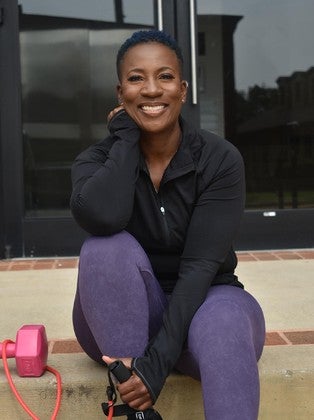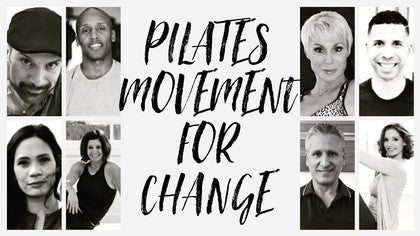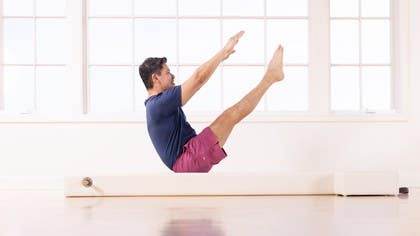
Pilates for All
Joseph Pilates was well ahead of his time. He created a system of movement and a way of life. He envisioned a world that included Pilates being taught in schools and wherever else it could be taught. He believed that all people should be doing Pilates. But "all" has changed. People often say that the previously limited access to Pilates had to do with the fact that it was only taught in New York or Los Angeles, or it was just for dancers or celebrities. While conversations around the lack of diversity and inclusion have been at the forefront of the Pilates industry for the last year, discussions around issues of cost and accessibility have been comparatively muted.
How did we get from Joseph Pilates original vision of Pilates for all to Pilates becoming a luxury item that only certain people can afford? And how can we honor Mr. Pilates’ dream of making it accessible to all?
It’s important to recognize that Pilates instructors and studio owners have to cover their overhead. Pilates equipment is expensive, as is comprehensive Pilates training, and the conferences and workshops that are a cost of doing business for Pilates pros. On the client side, private Pilates sessions are expensive, at around $100 an hour or more in major American cities like New York, N.Y. and Los Angeles, California.
Because Pilates students and studios tend to be located in higher-end neighborhoods and because media mentions of Pilates have until recently linked Pilates with celebrities’ luxurious lifestyles, many in the Pilates community may not have even realized that the industry has an accessibility problem. There are, however, exceptions to the rule.
Tonya Amos, artistic executive director of Grown Women Dance Collective in Oakland, California has successfully changed the narrative. Amos’ experience shows that Pilates can be made accessible without diminishing the quality of the teaching. She has created a successful blueprint based upon her 15 years of experience.
When I spoke to Amos recently, she made the distinction between fully-equipped Pilates studios being available to the privileged, mat classes in gyms being offered to the middle class, and poor people not ever getting to experience Pilates at all. Tonya ran a studio where she was able to teach students of all financial situations, and where everyone benefited from the same high-quality instruction. She was also willing to address the barriers that studio owners may never have to consider, such as transportation.
“My work is not only teaching and training, but also making sure my students had a ride to the studio, as well as thinking about things like childcare and hours of operation,” Amos explains. She is also committed to bringing the studio out into the community, a model she describes as “flooding our communities with life-shifting arts and wellness programs.”
Instead of hosting a separate “community” or “pay what you can” class for people who cannot otherwise afford Pilates, Amos integrates them into her regular studio classes. Not only is she able to cover her overhead, she is also helping to change the lives of people who may have felt like Pilates was not available for them and who would have never heard of Pilates if it had not been for her efforts.
Amos, who grew up at times without running water or electricity, is well aware of those who had been left behind in many ways. She is a former professional dancer who has taken comprehensive Pilates training five times and has extensive experience working with post-rehab as well as pre-and post-natal clients. She believes in not just offering access, but in offering excellence.
Thanks to her strong group teaching skills, she can offer specific and much-needed services to people who would normally not be able to afford those services. She has also created a two-year Pilates and Joyful Movement Life Skills and certification, supported by a grant from Balanced Body, that will impact community health disparities by training community members to go back to their communities and teach. In addition to Pilates training, the certification will include dance-based movement, mental health counseling, financial literacy, and paid internships.
What can Pilates instructors and instructors-in-training offer people who may never be able to afford the rates set by Pilates teachers and studios, or who have never even heard of Pilates? How can we share the power of this work that we proclaim is beneficial for everyone?
Here are some suggestions to get you started.
- Go outside of your studio doors. It is easy to ignore what we do not see. If all we know is our privileged spaces, then we may not even realize that underserved spaces exist.
- Reach out to community organizations or stakeholders in those spaces and ask how you can be of service without forcing your own agenda (or seeing it as a marketing opportunity).
- Evaluate how you can create opportunities in your space for those who would not normally be able to afford participating. This may include sliding scale fees or scholarships for some of your classes.
- Financially support organizations that are already doing the work.
- Make diversity a priority when hiring new instructors so that everyone feels welcome in your space.
- Consider creating virtual offerings for those who may not be able to get to where you are due to transportation or health challenges.
According to Glassdoor, the average Pilates instructor makes $76,436 annually, which is almost $30,000 more than annual salaries for personal trainers, yoga instructors, and other types of fitness instructors. While we are well worth every dollar we make, it also puts some of us in a position to give back without sacrificing our quality of life. As Pilates professionals, we know our work is important and life-changing. It is also important that this work is shared with all who are curious and interested, regardless of financial status.
What a tragedy it would be if we who hold the keys to help so many people decide that we’d rather keep them on the other side of the door. Now that we have learned to navigate teaching online and studios are opening back up, there are more opportunities to share the work than ever before.
I would like to believe that letting people in results in the richest experience for us all. It’s time to make Pilates something for all.
Comments
You need to be a subscriber to post a comment.
Please Log In or Create an Account to start your free trial.

















